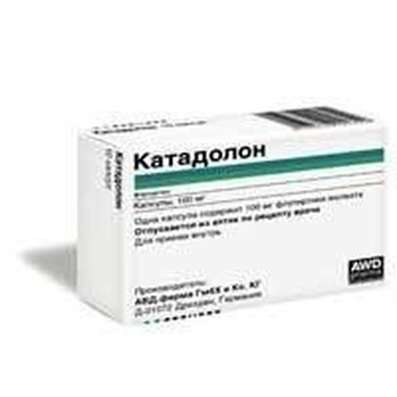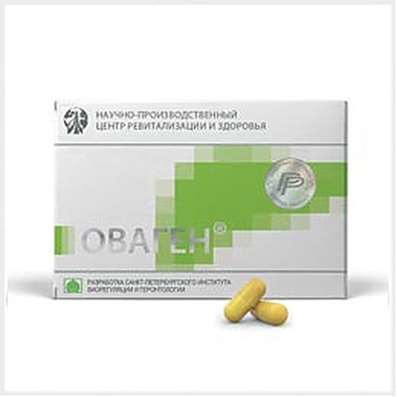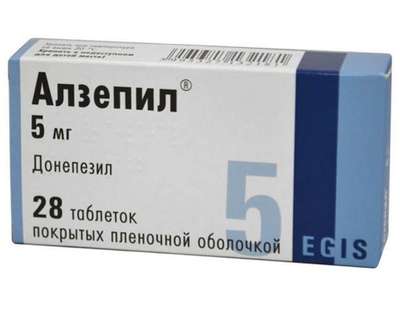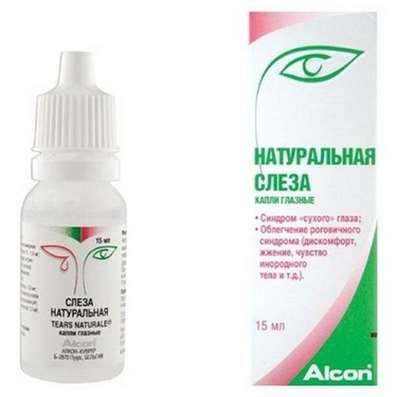Instruction for use: Galantamine (Galantaminum)
I want this, give me price
Chemical name
(4aS, 6R, 8aS) -4a, 5,9,10,11,12-Hexahydro-3-methoxy-11-methyl-6H-benzofuro [3a, 3,2-ef] [2] benzazepin-6-ol (As a hydrobromide)
Pharmacological group
M-, n-holinomimetiki, incl. Anticholinesterase agents
Nosological classification (ICD-10)
A80 Acute poliomyelitis
Heine-Medina disease, Children's spinal paralysis, Acute lateral poliomyelitis, Acute anterior poliomyelitis
A84 Tick-borne viral encephalitis
Tick-borne encephalitis, Tick-borne encephalitis
B91 Consequences of poliomyelitis
Poliomyelitis consequences, Post-poliomyelitis syndrome
F00 Dementia in Alzheimer's Disease (G30 +)
Alzheimer's dementia, Dementia in Alzheimer's disease
G04 Encephalitis, myelitis and encephalomyelitis
Disseminated acute encephalomyelitis, Leukoencephalitis, Meningomielitis, Myelitis, Acute encephalitis, Acute encephalomyelitis, Chronic encephalitis, Chronic encephalomyelitis, Encephalitis, Encephalomyelitis, Inflammation of meninges
G51 Lesions of the facial nerveNevralgia of the facial nerve
Neuritis of facial nerve, Paralysis of the facial nerve, Pain syndrome with neuritis of the facial nerve, Peripheral paralysis of the facial nerve, Paresis of the facial nerve
G58.9 Mononeuropathy, unspecified
Mononeuropathy, Neuropathic pain
G61.0 Guillain-Barre Syndrome
Miller-Fisher Syndrome, Polyneuropathy is infectious idiopathic, Polyradiculoneuritis acute primary idiopathic, Poliradiculoneuropathy acute demyelinating Guillain Barre, Guillain-Barre-Strol syndrom, The Landry-Guillain-Barre Syndrome
G62 Other polyneuropathies
Polyneuritis, Polineuropathy, Inflammation of peripheral nerves
G70 Myasthenia gravis and other disorders of the neuromuscular synapse
Myasthenic syndrome, Myasthenic syndromes, Myasthenia gravis, Myasthenic syndrome, Severe myasthenia gravis (Myasthenia gravis)
G71.0 Muscular dystrophy
Duchenne's Dystrophy, Muscular Duchenne muscular dystrophy, Myoatrophy
Duchenne's disease, Landusi-Dejerine shoulder-lobular-facial muscular dystrophy, Neurogenic muscular atrophy, Pseudohypertrophic myopathy, Myocardium pseudohypertrophic Duchenne, Progressive muscular dystrophy of Duchenne, Pseudohypertrophic muscular dystrophy of Duchenne, Pseudohypertrophic muscle paralysis, Duchenne's paralysis, Becker muscular dystrophy, Maxillofacial muscular dystrophy, Shoulder-scapular-facial muscular dystrophy of the Landusi-Dejerine
G72 Other myopathies
Myopathy, Primary muscular dystrophy
G80 Cerebral palsy
Cerebral paralysis, Children's cerebral palsy
G90.9 Disorder of autonomic nervous system, unspecified
Asthenovegetative symptoms, Asthenic-autonomic symptomatology, Asthenic autonomic disorder, Expressed autonomic responses, Nervous System Disorders, The defeat of the peripheral nervous system, Ganglionite, Sympathoglioniitis, Disease of the peripheral nervous system
K59.8.0 * Atony of the intestine
Atony of the duodenum, Atony of the gastrointestinal tract, Atony of the intestine, Atony of the intestine after operations, Atony of the intestine after childbirth, Atony of the musculature of the gastrointestinal tract, Sluggish peristalsis of the large intestine, Sluggish peristalsis of the colon, Hypotension of the duodenum, Hypotension of the intestine, Hypotension of the large intestine, Hypotonia of the large intestine, Constipation of various etiologies, due to hypotension of the gastrointestinal tract and flaccid peristalsis of the large intestine, Violation of the promotion of intestinal contents, Postoperative atony of the stomach, Postoperative intestinal atony
K94 * Diagnosis of digestive diseases
Hepatic-splenic scans, Visualization of the liver by invasive methods, Isotope scintigrams of the liver, Laparocentesis, Ultrasound examination of the liver, Magnetic resonance imaging of the liver, Computed tomography of the liver, Esophageal Manometry, Anoscopy, Visualization of the biliary tract, Ultrasonic visualization of the liver, Gastroscopy, Degassing of the intestine before diagnostic tests, Degassing of the intestine before X-ray examination, Gastrointestinal diagnostics, Diagnosis of bleeding from the small intestine, Diagnosis of focal pathology of the liver, Diagnosis of secretory ability and acid-forming function of the stomach, Diagnostic intervention on the large intestine, Duodenal sounding, Duodenoscopy, Instrumental studies of the abdominal cavity organs, Intraoperative cholangiography, Irrigoscopy, Examination of gastric secretion, Gastrointestinal tract examination, Study of acid-forming function of the stomach, Examination of secretory function of the stomach, Colonoscopy, Controlling the effectiveness of lithotripsy, Determination of the degree of hypersecretion in duodenal ulcer, Preparation for diagnostic tests, Preparation for X-ray and instrumental methods of abdominal examination, Preparation for X-ray and ultrasound examination of the abdominal organs, Preparation for X-ray or endoscopic examination of the digestive tract, Preparation for X-ray examination of the gastrointestinal tract with contrasting, Preparation for roentgenological examination of gastrointestinal tract with application of barium, Preparation for X-ray and ultrasound of the abdominal organs, Preparation for X-ray examination or ultrasound of the abdominal cavity organs, Preparation for ultrasound and radiographic examination of the abdominal cavity organs, Preparation for endoscopic examination of the lower parts of the colon, Preparation for endoscopic or roentgenologic examination of the lower intestine, Preparation of the lower GI tract for endoscopy, Preparation of the colon for instrumental and radiographic examinations, Preparation of the colon for X-ray and endoscopy, Recto-manoscopy, Rectoscopy, Radiography of the digestive tract, X-ray diagnosis of achalasia of the esophagus, X-ray diagnosis of diseases of the digestive tract, X-ray diagnostics of the digestive tract, Radiocontrast examination of bile ducts, Radiocontrast study of the digestive tract, Radiographic diagnosis of gastrointestinal tract, X-ray examinations of the digestive tract, X-ray examination of the duodenum and gallbladder, X-ray examination of the stomach, X-ray examination of the biliary tract and gallbladder, X-ray examination of the digestive tract, X-ray examination of the esophagus, Retrograde cholangiopancreatography, Retrograde endoscopic pancreatocholangiorentgenography, Sonography of the gastrointestinal tract, Splenoportography, Ultrasound of the abdominal cavity organs, Functional X-ray diagnostics for stomach diseases, Functional X-ray diagnostics for intestinal diseases, Cholangiography, Cholangiography in cholelithiasis, Cholangiopancreatography, Cholecystography, Esophagoscopy, Endoscopic retrograde pancreatography, Endoscopic retrograde cholangiopancreatography, Endoscopic interventions, Endoscopic examination of the digestive system, Endoscopic examination of the lower parts of the large intestine, Endoscopic examination of the digestive tract, Endoscopy, ERCPR, Panendoscopy
M54.1 Radiculopathy
Acute sciatica, Radiculopathy, Radiculitis, Radiculitis with radicular syndrome, Acute radiculopathy, Pain syndrome with radiculitis, Subacute radiculitis, Radiculitis, Chronic radiculitis, Diseases of the spinal column
M79.2 Neurology and neuritis, unspecified
Pain syndrome with neuralgia, Brachialgia, Occipital and intercostal neuralgia, Neuralgia, Neuralgic pain, Neuralgia, Neuralgia of intercostal nerves, Neuralgia of the posterior tibial nerve, Neuritis, Neuritis traumatic, Neuritis, Neurological Pain Syndromes, Neurological contractures with spasms, Acute neuritis, Peripheral neuritis, Post-traumatic neuralgia, Severe pain of a neurogenic nature, Chronic neuritis, Essential neuralgia
N31.2 neurogenic bladder weakness, not elsewhere classified
Urinary incontinence in a stressful situation, Atony of bladder, Atony of the bladder (the sphincter) (neurogenic), Impaired function of the sphincter of the bladder, Neurogenic bladder disorders, Neurogenic bladder disorder, Neurogenic bladder, Functional insufficiency of the sphincter of the bladder, Imperative incontinence
N39.4 Other specified types of urinary incontinence
Urinary incontinence, Bed-wetting, Frequent nocturnal urination, Urinary incontinence in women, Anishuriya, Primary nocturnal enuresis, Primary nocturnal enuresis in children
T14.4 Trauma of nerve (nerves) of unspecified body region
Hematomyelia, Mechanical damage to peripheral nerves, Wound of peripheral nerves, Traumatic plexus lesions, Nerve injuries, Injuries of peripheral nerves, Post-traumatic neuralgia
T40 Poisoning by drugs and psychodysleptics [hallucinogens]
Drug Intoxication, Intoxication narcotic, Intoxication with narcotic analgesics, Drug poisoning, Poisoning with drugs and analgesics, Poisoning with drugs, Poisoning with sleeping pills and narcotic drugs, Overdose of narcotic analgesics
T44 Poisoning by drugs acting primarily on the autonomic nervous system
Code CAS 357-70-0
Characteristics of substance Galantamine
Hydrobromide of alkaloid isolated from tubers of Voronov snowdrop (Galanthus Woronowii A. Los.), A family of amaryllis (Amaryllidaceae). Contained also in other species of the snowdrop of the genus Galanthus. White fine crystalline powder of bitter taste. It is difficultly soluble in water, almost insoluble in ethyl alcohol.
Pharmacology
Pharmacological action - anticholinesterase.
Reversibly inhibits acetylcholinesterase, enhances and prolongs the action of endogenous acetylcholine. It facilitates impulses in the cholinergic, incl. Neuromuscular, synapses, enhances the processes of excitation in the reflex zones of the spinal cord and brain. Increases the tone of smooth and skeletal muscles, stimulates the secretion of digestive and sweat glands. Causes miosis and spasm of accommodation, lowers the intraocular pressure in closed-angle glaucoma. When injected into the conjunctival sac, it can cause temporary swelling of the conjunctiva. Penetrates through the BBB, enhances the processes of excitation in the central nervous system. When used in complex therapy, spastic forms of infantile cerebral palsy improves neuromuscular conduction, increases the contractile ability of muscles, positively influences mnestic functions. By increasing the activity of the cholinergic system, cognitive function can improve in patients with Alzheimer's dementia.
After a single oral intake, 8 mg is rapidly absorbed from the digestive tract, bioavailability is about 90%. Eating slows down absorption (Cmax decreases by 25%), but does not affect the completeness of absorption (AUC). Tmax is achieved after 1.2 hours. The pharmacokinetics of galantamine is linear in the dose range of 4-16 mg 2 times a day. Binding to plasma proteins - 18%. In whole blood, galantamine is predominantly in shaped elements (52.7%). The ratio of blood / plasma galantamine concentrations is 1.2. Plasma clearance - about 300 ml / min, the volume of distribution - 175 liters. The main ways of metabolism are N-oxidation, N- and O-demethylation, glucuronization and epimerization. In people with active metabolism of CYP2D6 substrates, the most important metabolic pathway is O-demethylation. The main isoenzymes of the cytochrome P450 system involved in the metabolism of galantamine are CYP2D6 and CYP3A4. In plasma of people with fast and slow metabolism, the main part is unchanged galantamine and its glucuronide. In the plasma of people with rapid metabolism, glucuronide O-desmethylgalanthamine is also found. Excretion is biphasic, terminal T1 / 2 - 7-8 hours. Kidney clearance - 65 ml / min (20-25% of the plasma clearance). It is excreted in the urine (90-97%, of which 18-22% unchanged for 24) and feces (2.2-6.3%). After a single administration of galanthamine in the plasma of fast and slow metabolizers, none of the active metabolites (norgalanthamn, O-demethylgalanthamine and O-demethylnoghalanthamine) in unconjugated form was detected. Norgalantamine is found in the plasma of patients after repeated administration of galantamine (no more than 10% of the concentration of galantamine). In patients with Alzheimer's disease, the concentration of galantamine in blood plasma is 30-40% higher than in young healthy people. With moderate hepatic insufficiency (7-9 points on the Child-Pugh scale), AUC and T1 / 2 increase by 30%. With moderately severe chronic renal failure (creatinine clearance 52-104 ml / min), the plasma concentration of galantamine is increased by 38%, with severe (creatinine clearance - 9-51 ml / min) - by 67%.
Indications
Capsules of prolonged action: dementia of the Alzheimer's type of mild or moderate severity, incl. With chronic disorders of cerebral circulation.
Tablets: dementia of the Alzheimer's type of mild or moderate severity; Poliomyelitis (immediately after the termination of the febrile period, as well as in the recovery period and the period of residual events); Myastenia gravis, progressive muscular dystrophy, myopathy; cerebral palsy; neuritis; radiculitis.
Injection solution: In neurology, traumatic injuries of the nervous system, cerebral palsy, spinal cord diseases (myelitis, poliomyelitis, poliomyelitis form of tick-borne encephalitis), mononews, polyneuritis, polyneuropathy, polyradiculoneuritis, Guillain-Barre syndrome, idiopathic paresis of the facial nerve, myopathy, bed-wetting. In anesthesiology and surgery: as an antagonist of nondepolarizing muscle relaxants and for the treatment of postoperative atony of the intestine and bladder. In physiotherapy: in the form of iontophoresis in diseases of the peripheral nervous system. In Toxicology: intoxication with anticholinergic drugs, morphine and its analogs. In roentgenology: to improve the quality of diagnostics of the digestive system, incl. gallbladder.
Contraindications
Hypersensitivity, epilepsy, hyperkinesia, bronchial asthma, angina pectoris, bradycardia, chronic heart failure, AV blockade, arterial hypertension, chronic obstructive pulmonary disease, mechanical intestinal obstruction, obstructive diseases or recent surgery on the digestive tract, obstructive diseases or recent operative Interventions on the urinary tract or prostate gland, renal failure (creatinine clearance less than 9 ml / min), severe liver dysfunction (more than 9 on the Child-Pugh scale), children under 1 year (for solution), up to 9 years (for Tablets).
Restrictions on the use
General anesthesia, syndrome of weakness of the sinus node, concomitant use of drugs, slowing heart rate (digoxin, beta-adrenoblockers), mild and moderate violations of the liver and / or kidney function; For oral forms (in addition): peptic ulcer of the stomach and duodenum; For tablets (in addition): gluten enteropathy (due to the presence of wheat starch in the composition), lactose deficiency, galactosemia, glucose-galactose malabsorption syndrome (lactose is included in the formulation).
pregnancy and lactation
When pregnancy is possible in the event that the potential benefit to the mother exceeds the possible risk to the fetus.
The action category for fetus by FDA is B.
Women receiving galantamine should abstain from breastfeeding (it is not known whether galantamine is excreted in breast milk).
Side effects
From the side of the cardiovascular system and blood (blood, hemostasis): decrease or increase in blood pressure, orthostatic collapse, heart failure, edema, AV blockade, flutter or atrial fibrillation, QT interval prolongation, ventricular and supraventricular tachycardia, supraventricular extrasystole, blood rushes To a person, bradycardia, ischemia or myocardial infarction, thrombocytopenia, purpura, anemia.
On the part of the intestine: nausea, vomiting, abdominal pain, diarrhea, bloating, dyspepsia, gastrointestinal discomfort, anorexia, gastritis, dysphagia, dry mouth, increased salivation, diverticulitis, gastroenteritis, duodenitis, hepatitis, perforation of the esophagus mucosa, Bleeding from the upper and lower gastrointestinal tract, increased activity of hepatic transaminases.
From the musculoskeletal system: muscle spasms, muscle weakness.
On the part of the genitourinary system: urinary incontinence, hematuria, frequent urination, urinary tract infections, urinary retention, calculosis, renal colic.
From the nervous system and sensory organs: tremor, syncope, inhibition, taste distortion, visual and auditory hallucinations, behavioral reactions, including agitation / aggression; Transient impairment of cerebral circulation or stroke; Fatigue, headache, dizziness, drowsiness, insomnia, cramps, muscle spasms, paresthesia, ataxia, hypo- or hyperkinesia, depression (very rarely with suicide), apathy, paranoid reactions, delirium, apraxia, aphasia, vision impairment (spasm Accommodation), tinnitus (infrequently).
Other: chest pain, excessive sweating, fever, weight loss, epistaxis, rhinitis, dehydration (in rare cases - with the development of kidney failure), bronchospasm, increased libido, hypokalemia, increased sugar or alkaline phosphatase in the blood.
Interaction
It is an antagonist of morphine and its structural analogues in relation to the inhibitory effect on the respiratory center. It restores neuromuscular conduction, blocked by curare-like antidepolarizing agents (tubocurarine, etc.). Strengthens the effect of depolarizing muscle relaxants (Ditilin). Cholinolytic agents (atropine, etc.) eliminate peripheral muscarin-like effects of galantamine, curare-like substances and ganglion blockers - nicotine-like.
Aminoglycosides can reduce the therapeutic effect of galantamine. LS, reducing heart rate (digoxin, beta-adrenoblockers), - the risk of aggravation of bradycardia. Cimetidine may increase the bioavailability of galantamine.
Inhibitors of CYP2D6 and CYP3A4 cytochrome P450 isoenzymes can increase the galactamine AUC when used simultaneously. AUC galantamine is increased by 30 and 40% with its simultaneous application with ketoconazole and paroxetine, respectively. With simultaneous use with erythromycin AUC galantamine increases by 10%. Inhibitors of the isoenzyme CYP2D6 (amitriptyline, fluoxetine, fluvoxamine, paroxetine, quinidine) reduce the clearance of galantamine by 25-33%. Galantamine increases the inhibitory effect on the CNS of ethanol and sedatives.
Overdose
Symptoms: muscle weakness or fasciculation, severe nausea, vomiting, abdominal cramps, increased salivation, lacrimation, urinary and fecal incontinence, severe sweating, decreased blood pressure, bradycardia, collapse and convulsions. Pronounced muscular weakness in combination with hypersecretion of the mucous membrane of the trachea and bronchospasm can lead to a lethal blockade of the airways.
Postmarketing experience (random intake of 32 mg of the drug): development of bidirectional spindle-shaped ventricular tachycardia, prolongation of the QT interval, ventricular tachycardia with short-term loss of consciousness.
Treatment: gastric lavage (with oral administration), symptomatic therapy, administration of anticholinergics - atropine (0.5-1.0 mg IV); The frequency and magnitude of subsequent doses depend on the dynamics of the patient's clinical condition.
Routes of administration
P / to, in / m, in / in, percutaneously (by iontophoresis), orally.
Precautions
Update of information
Serious skin reactions
In patients receiving galantamine in the form of tablets or prolonged-action capsules, serious skin reactions have been reported (Stevens-Johnson syndrome and acute generalized exanthematous pustulosis).
It is necessary to inform patients and caregivers that the use of galantamine should be discontinued at the first occurrence of skin rash, unless it is clear that the rash is not associated with the use of this drug. If serious skin reactions develop, the use of galantamine should not be resumed and alternative therapy should be considered.
special instructions
In case of impaired motor activity, treatment should be combined with physiotherapeutic procedures (massage, medical gymnastics), which should be started 1-2 hours after the administration of galantamine.

 Cart
Cart





